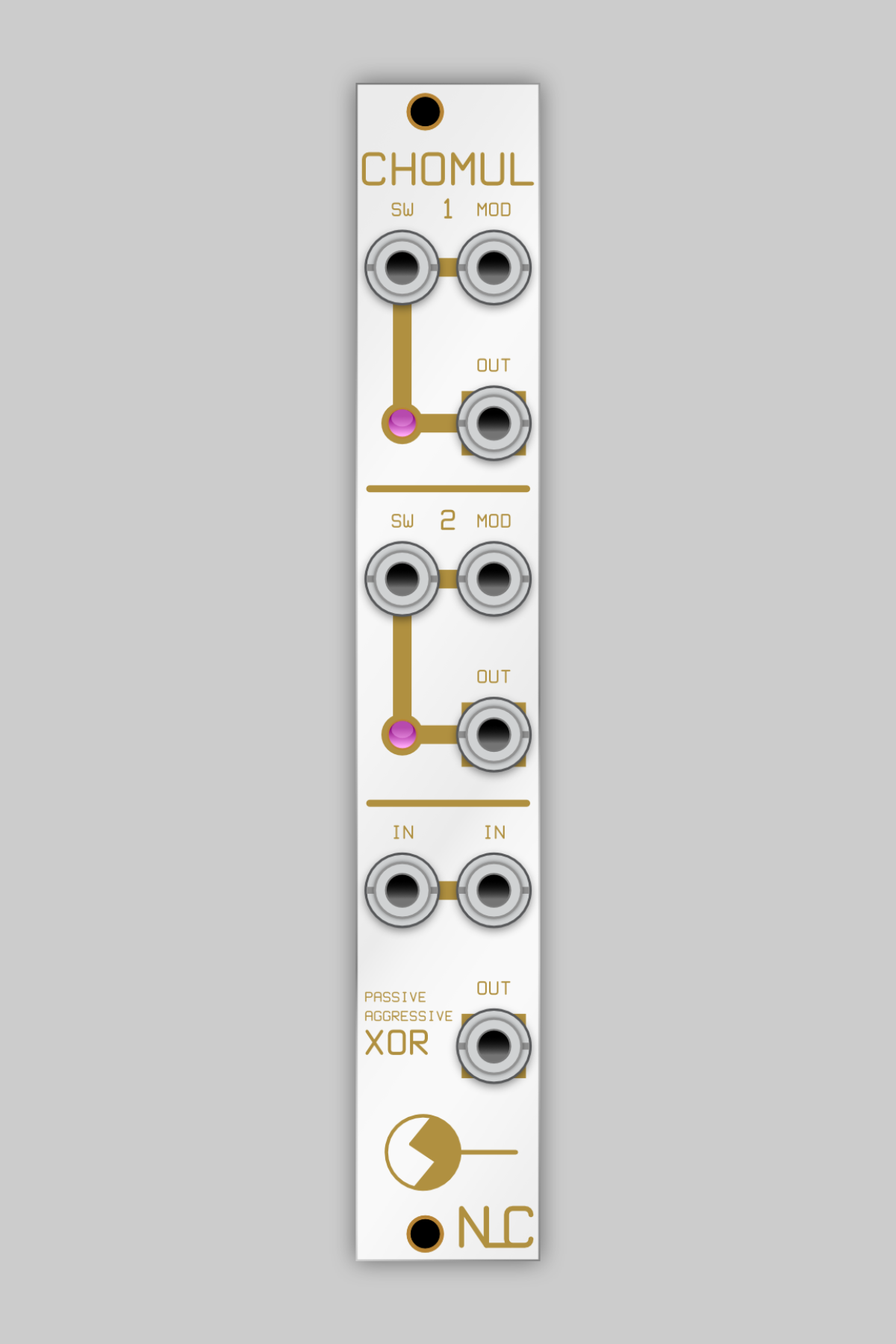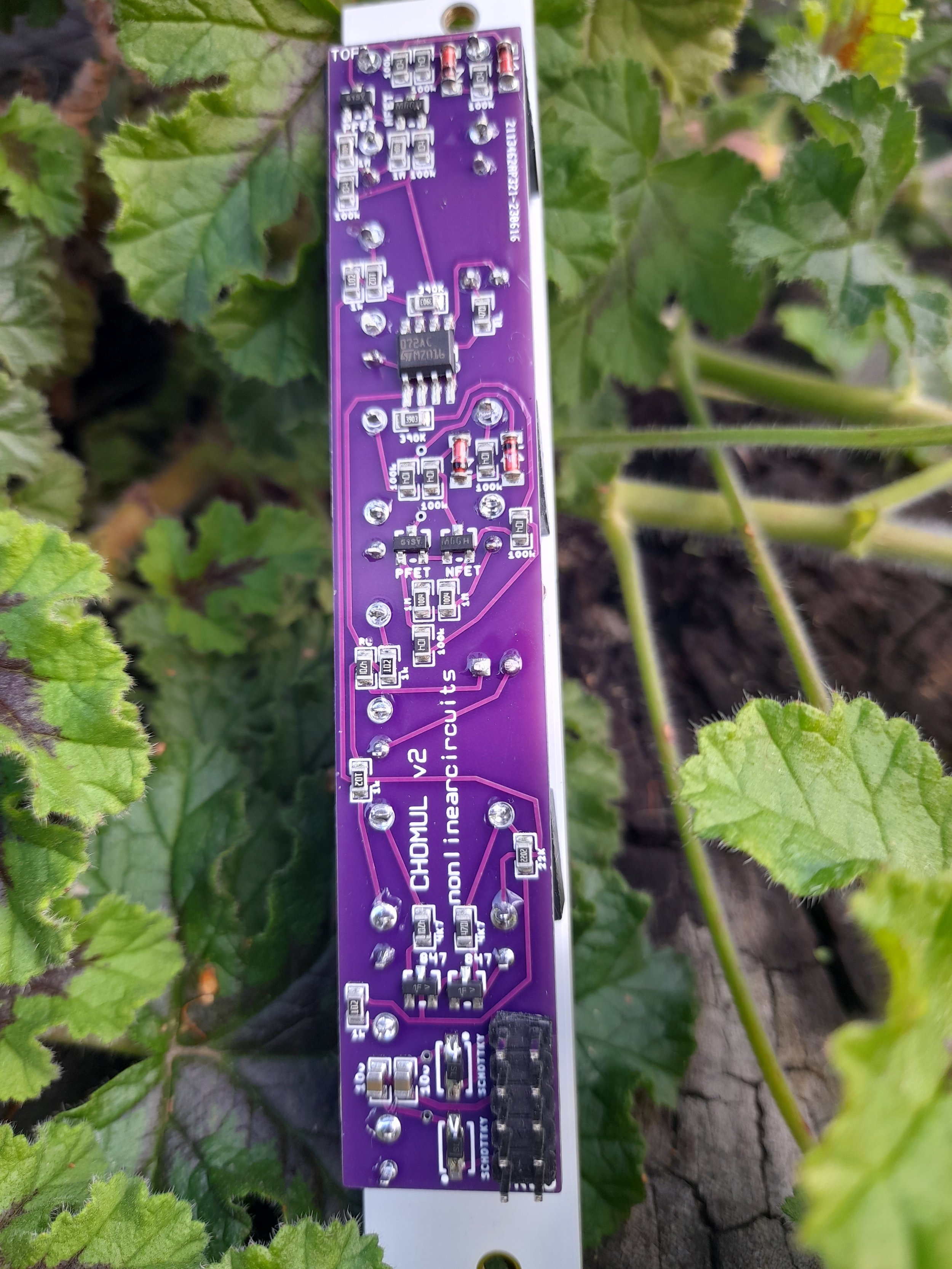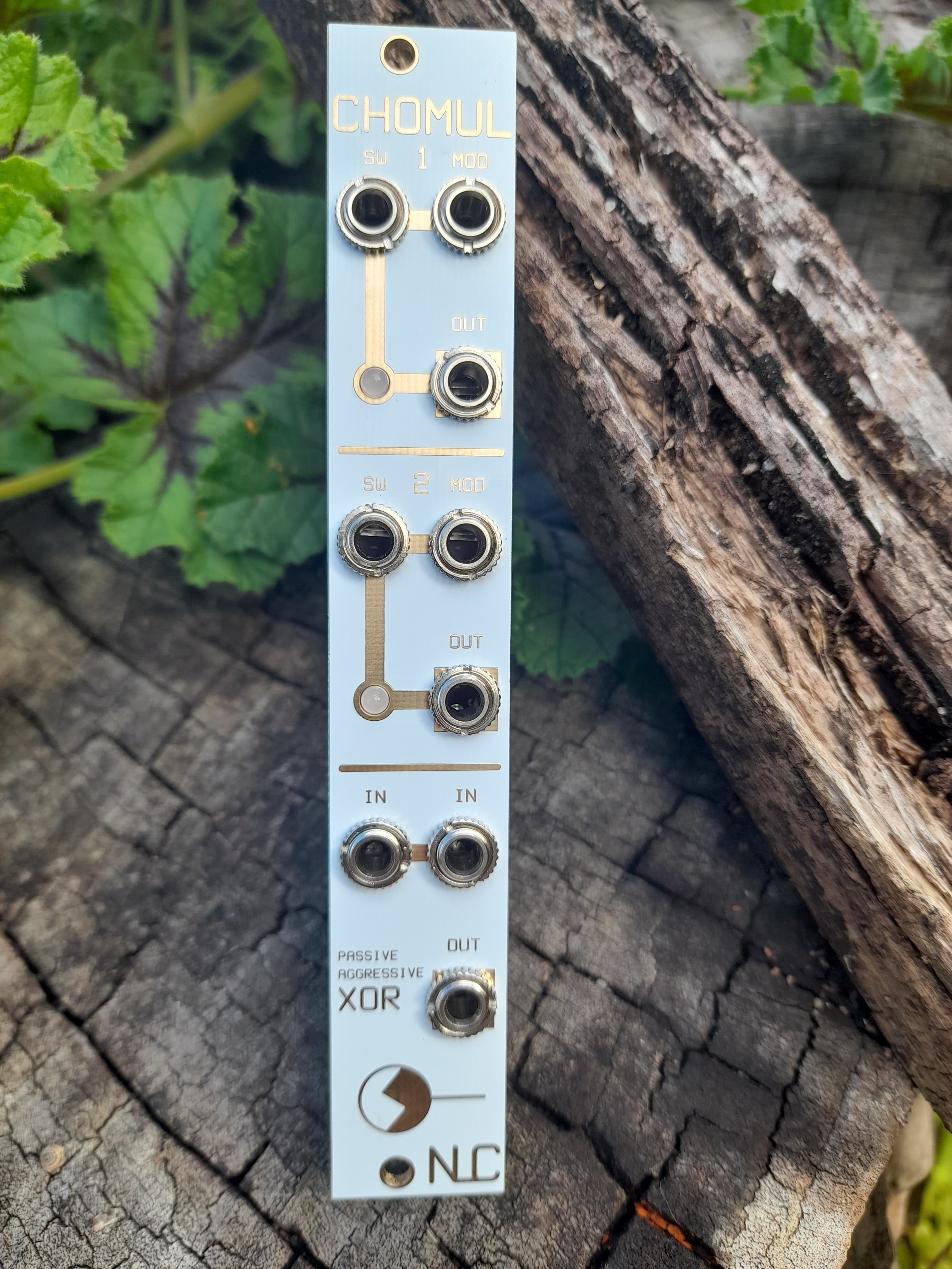CHOMUL
Description/Usage
4hp
This module is inspired by an article from Harald Bode discussing ring modulators and multipliers. I can’t seem to find it atm but pretty sure it was AES, anyway it was one of those things that stuck in my head. Bode stated there are two types of multipliers, ones like the diode ring modulator which he states are suitable for use in modular synths and switching or chopper types which are only good for driving AC motors and NOT suitable for use in modular synths.
Ahem, so here is a switching or chopper type multiplier for use in a modular synth.
There are two multipliers on the PCB, with the inputs of the upper one swapped and fed to the switches of the inputs of the 2nd one. The outputs of both are fed to the switches of the inputs of the ‘Passive
aggressive XOR’ (see ‘This 2 shall pass’ and thanks Kris N for the name)
Usually with a switching multiplier, one input (marked SW on panel) will be a pulse signal but don’t feel obliged, patch in whatever you like. These circuits work nicely with CV signals and are good at creating interesting envelopes. Looking on a scope, you will see gaps or steps where the diode and FET inherent V-on has an effect.
DIY
Description/Usage
4hp
This module is inspired by an article from Harald Bode discussing ring modulators and multipliers. I can’t seem to find it atm but pretty sure it was AES, anyway it was one of those things that stuck in my head. Bode stated there are two types of multipliers, ones like the diode ring modulator which he states are suitable for use in modular synths and switching or chopper types which are only good for driving AC motors and NOT suitable for use in modular synths.
Ahem, so here is a switching or chopper type multiplier for use in a modular synth.
There are two multipliers on the PCB, with the inputs of the upper one swapped and fed to the switches of the inputs of the 2nd one. The outputs of both are fed to the switches of the inputs of the ‘Passive
aggressive XOR’ (see ‘This 2 shall pass’ and thanks Kris N for the name)
Usually with a switching multiplier, one input (marked SW on panel) will be a pulse signal but don’t feel obliged, patch in whatever you like. These circuits work nicely with CV signals and are good at creating interesting envelopes. Looking on a scope, you will see gaps or steps where the diode and FET inherent V-on has an effect.
DIY
Description/Usage
4hp
This module is inspired by an article from Harald Bode discussing ring modulators and multipliers. I can’t seem to find it atm but pretty sure it was AES, anyway it was one of those things that stuck in my head. Bode stated there are two types of multipliers, ones like the diode ring modulator which he states are suitable for use in modular synths and switching or chopper types which are only good for driving AC motors and NOT suitable for use in modular synths.
Ahem, so here is a switching or chopper type multiplier for use in a modular synth.
There are two multipliers on the PCB, with the inputs of the upper one swapped and fed to the switches of the inputs of the 2nd one. The outputs of both are fed to the switches of the inputs of the ‘Passive
aggressive XOR’ (see ‘This 2 shall pass’ and thanks Kris N for the name)
Usually with a switching multiplier, one input (marked SW on panel) will be a pulse signal but don’t feel obliged, patch in whatever you like. These circuits work nicely with CV signals and are good at creating interesting envelopes. Looking on a scope, you will see gaps or steps where the diode and FET inherent V-on has an effect.


